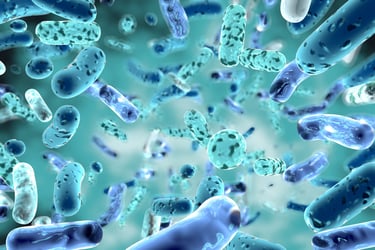eStoreRx™
Online Supplement Dispensary
eStoreRx™ is an easy direct-to-patient ordering & fulfilment program for lifelong wellness.
For over 40 years, Biotics Research Corporation has revolutionized the nutritional supplement industry by utilizing “The Best of Science and Nature”. Combining nature’s principles with scientific ingenuity, our products magnify the nutritional
eStoreRx™ is an easy direct-to-patient ordering & fulfilment program for lifelong wellness.
Biotics Research is proud to expand our commitment to education with the Wellness Unfiltered Pro Podcast. Each episode delves into key health topics and the clinical applications of our premier products. Through candid, insightful conversations, our team offers practical guidance to keep you informed and empowered as a healthcare professional.
December 18 2025
Low-carbohydrate diets are perhaps most popular for weight loss, but the strictest form of carbohydrate restriction – a ketogenic diet – has been show...
 UT Southwestern scientists have discovered a key driver behind the communication that helps synchronize nutrient absorption in the gut and the rhythms of the Earth’s day-night light cycle.
UT Southwestern scientists have discovered a key driver behind the communication that helps synchronize nutrient absorption in the gut and the rhythms of the Earth’s day-night light cycle.
Previous studies show that circadian rhythmicity is a defining feature in the metabolism of mammals. It synchronizes metabolic processes to day-night light cycles. It isn’t surprising, therefore, that the gut microbiota also displays daily cycling.
During this fascinating study on mice, the researchers found that commensal, or good, bacteria can do this epigenetically. The bacteria induce the rhythmic expression of a protein called histone deacetylase 3 (HDAC3) in the skin cells of the small intestine. This expression drives the oscillations in intestinal metabolic gene expression, particularly with regard to nutrient transport and lipid metabolism. HDAC3 also directly activates estrogen-related receptor alpha, which promotes the absorption of fats.
This means that the mice that lack the essential good bacteria that regulate their metabolism also become obese on high-fat chow. It could also explain antibiotic-related obesity, as well as obesity that’s related to sleep disruption due to jet lag and night-time working.
Related Biotics Research Products:
By submitting this you will be receiving our latest updates on post.
Nature Microbiology recently published the results of a multi-cohort multi-omic analysis that examined the link between ...
Learn moreBMC Microbiology recently published a meta-analysis of metagenomic sequencing data from obese and non-obese participants...
Learn moreResults of a prospective and longitudinal study conducted among schoolchildren were recently published in Allergology In...
Learn more
*These statements have not been evaluated by the Food and Drug Administration. This product has not intended to diagnose, treat, cure, or prevent any disease.
Proposition 65 Warning
© 2025 Biotics Research Corporation - All Rights Reserved
Submit your comment